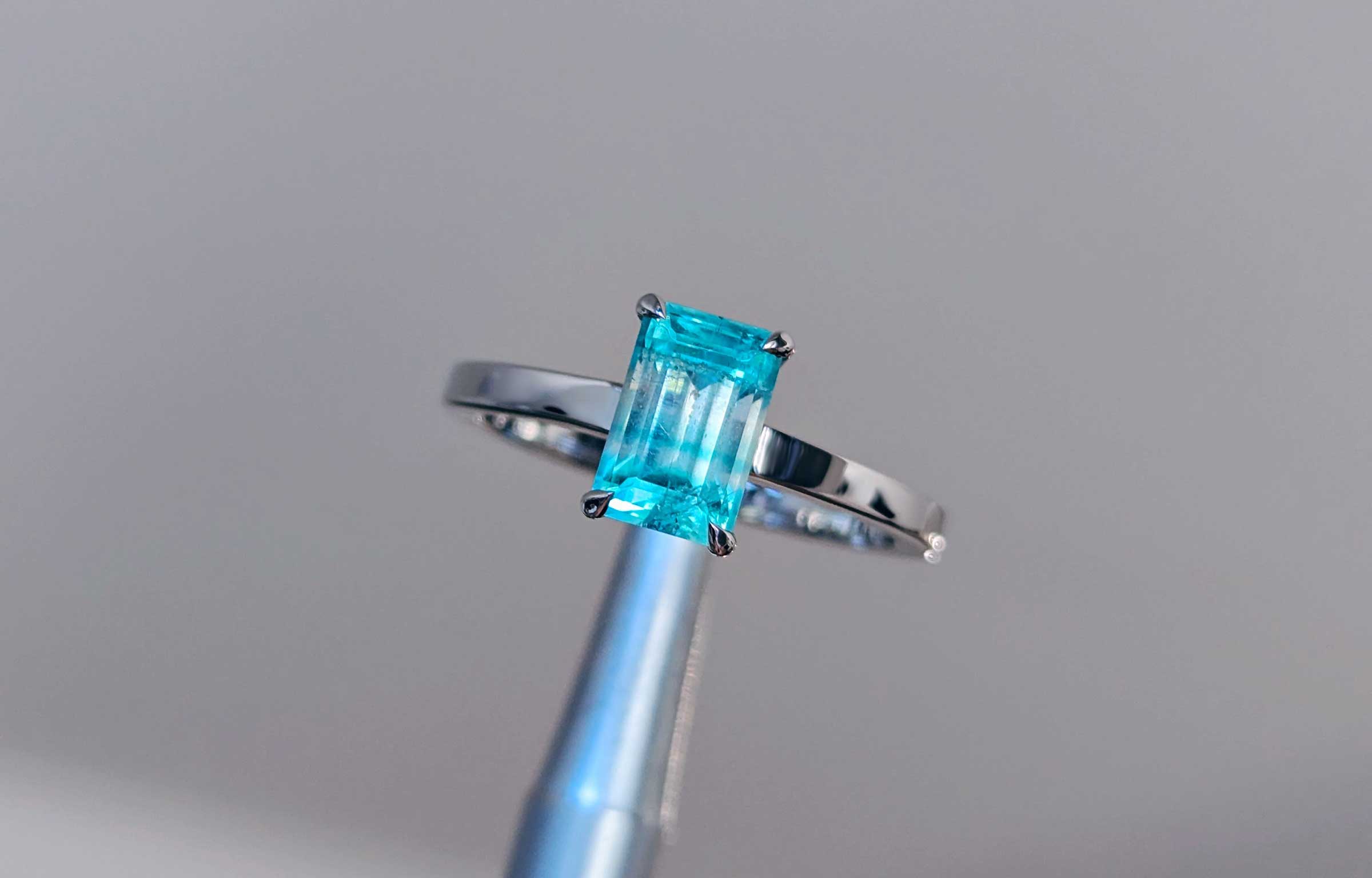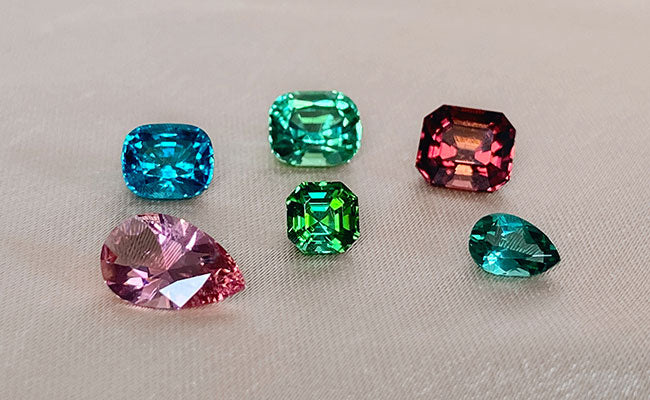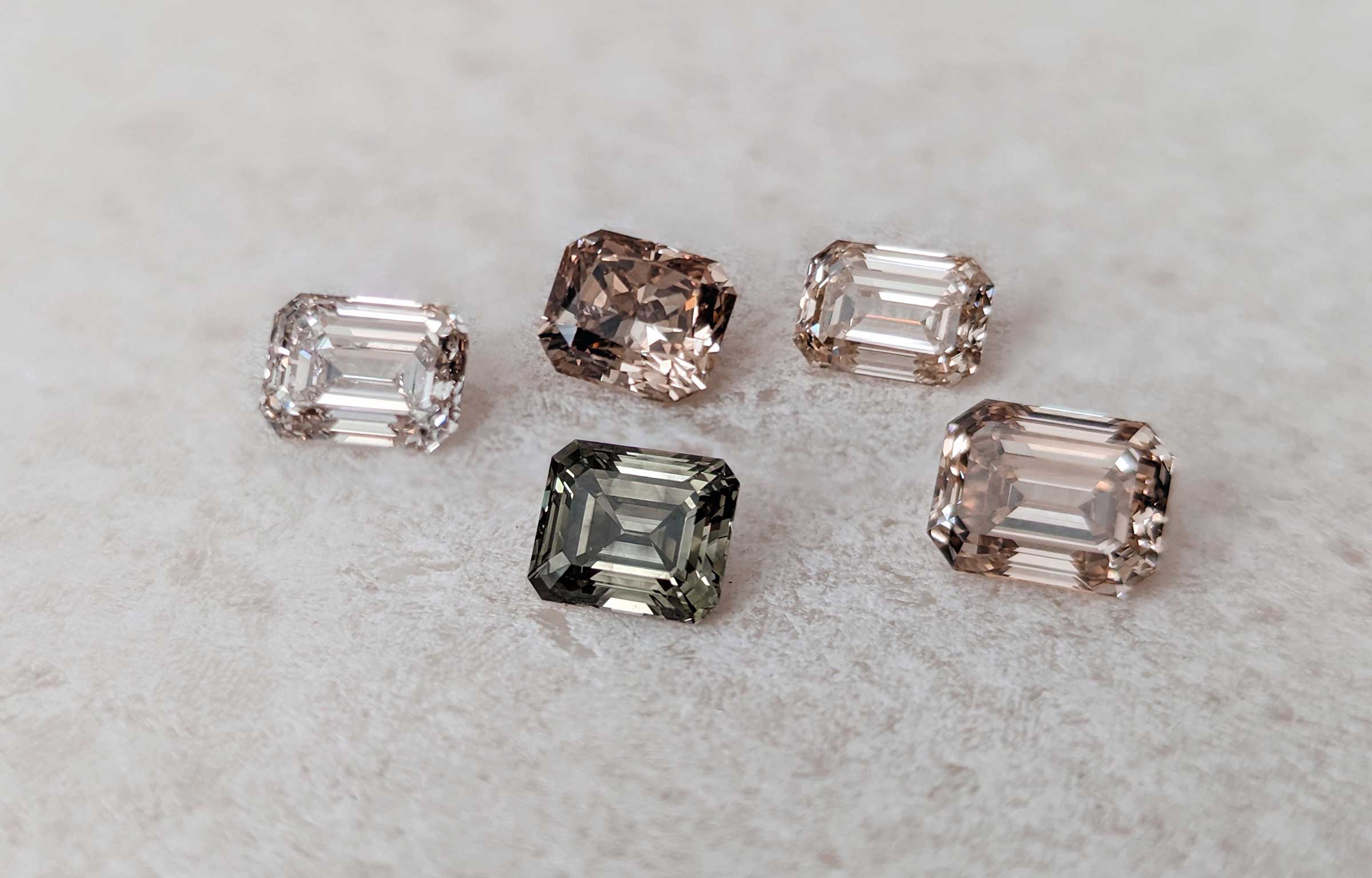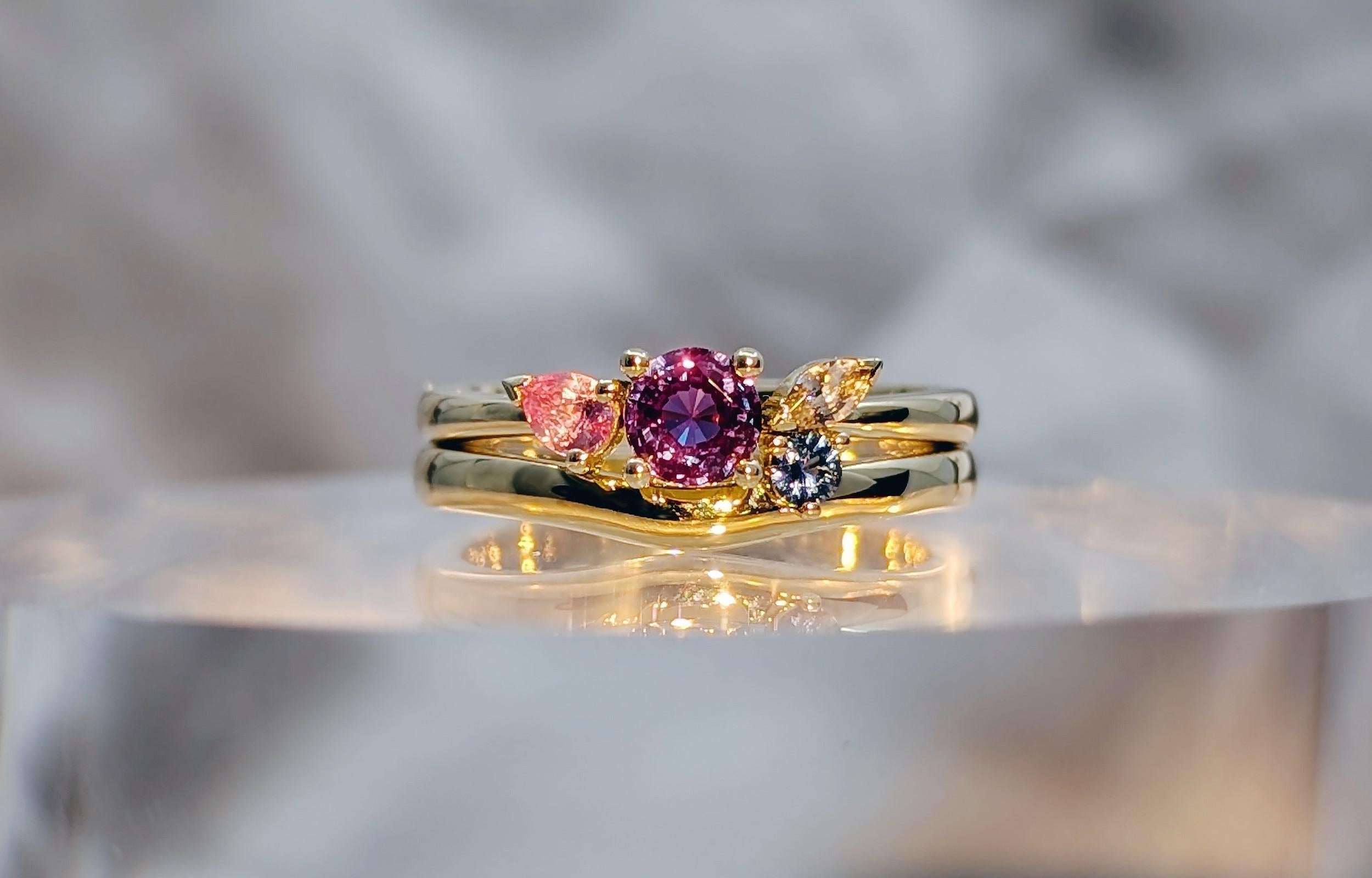
May’s birthstone: A jewellery lover’s guide to rare and rebellious emeralds
Everyone’s heard of Colombian emeralds. But what about the ones you haven’t heard of? The overlooked, the elusive, the almost-impossible-to-find. Here’s your invitation into the world of rare emeralds most people never get to see.
When you think of May’s birthstone – the lush green emerald – Colombia, Zambia or Brazil probably come to mind. They produce some of the world’s most prized gems. But if you're keen to discover the best-kept secrets of the gemstone world, it’s time to look beyond the usual suspects.
From Australia's Torrington emeralds to Zimbabwe's vivid Sandawanas, these gems are perfect for collectors who are chasing something different.

Key takeaways:
- Why Colombia and Zambia rule the emerald world
- Australia's hidden greens: Torrington emeralds
- Lesser-known emerald sources
- How to choose your emerald
- Create your storytelling emerald jewellery
- Emerald FAQs: Your May birthstone questions answered
Why Colombia and Zambia rule the emerald world
It's no secret that Colombia and Zambia produce some of the world's most prized emeralds.
These regions set the standard for emerald quality thanks to their combination of vivid colour, clarity (compared to other emerald producing regions) and reliable supply.
Colombian emeralds are celebrated for their bright, saturated greens, often described as the perfect emerald hue. The famed Muzo and Chivor mines have produced some of the most famous stones in history, earning Colombia its reputation as the emerald capital of the world.
Zambian emeralds offer deeper or bluish-green tones compared to Colombian emeralds. Their higher iron content gives them their distinctive colour and also makes them slightly harder and less brittle than Colombian emeralds. Kagem, the world's largest emerald mine, produces a steady supply of high quality gems, a favourite for both jewellers and collectors.
Also worth mentioning are Brazilian emeralds, with Brazil ranking as the world's third largest producer. They're renowned for producing some of the largest crystals ever discovered.
For many, these are the ultimate emeralds. But for collectors - especially those who value individuality - the journey doesn't end there.

Australia's hidden greens: Western Australian and Torrington emeralds
If you're an emerald lover searching for something closer to home, you're in luck.
Let's start with New South Wales. Just outside the tiny village of Torrington, you’ll find a little-known source of emeralds with a big personality. Torrington emeralds often have a soft minty or bluish-green colour and can often be identified by their distinctive colour banding.
And then there’s Western Australia (WA). While still emerging on the global radar, WA has quietly produced its own emeralds in small quantities.
Because of their limited production and lower commercial profile, Australian emeralds are a refreshing twist for anyone loves rare, locally significant gems.
An emerald cut Australian Torrington emerald in a platinum ring
Lesser-known emerald sources
Beyond the big three, a few lesser-known sources offer hidden treasures for collectors.
Zimbabwean emeralds: Sandawana emeralds are prized by gem enthusiasts for their intense colour. Their vivid hue often rivals the best Colombian stones, though sizes are generally small.
Ethiopian emeralds: A relative newcomer, Ethiopia has begun producing emeralds with distinct clarity and fresh, bright greens. Their newness alone makes them exciting for collectors.
Pakistani emeralds: The Swat Valley is home to emeralds known for their vivid green hues and relatively high clarity. Mined using traditional, manual techniques, production is artisanal and relatively limited. Efforts are underway to improve traceability and promote more responsible sourcing in the region.
Afghanistani emeralds: Panjshir Valley yields emeralds often compared to fine Colombian stones for their vibrant colour and clarity. Supplies can be limited due to political instability and challenging logistics.
Madagascan emeralds: Madagascar offers emeralds with distinctive bluish-green hues and fascinating inclusions. Many stones are mined by small-scale, artisanal miners, which can support local economies.

How to choose your emerald
Every emerald tells a story. Here's what to consider when choosing the one that will tell yours.
Origin: If you're looking for a stone with meaning or a personal connection, start with its origin. For Australian collectors, Torrington and WA emeralds offer something especially rare - a way to wear this gem with a homegrown story. Colombia, Zambia and Brazil deliver global prestige, while lesser-known sources like Pakistan, Madagascar and Zimbabwe bring individual charm for those who love the road less travelled.
Budget: If price matters (and let's be honest, it usually does), know that origin, colour and clarity all play a role. While Colombian emeralds often command premium prices for their rarity and reputation, other origins offer compelling options at a range of price points. Your jeweller will be able to recommend the choice that best suits you.
Colour: If you're wondering what "the right" emerald colour is, it's the one that speaks to you. From the soft minty greens of Torrington, to the bluish-greens of Zambia, to the vivid, saturated tones of Colombia, emeralds come in a wide spectrum. There's no single right answer - just the one that feels right for you.
Sustainability: If conscious sourcing is important to you, ask about where your emerald comes from and how it was mined. While full traceability in emeralds can be difficult to achieve, small-scale mines and lesser-known sources may offer more aligned options when working with a transparent jeweller.
Visual character: If you love stones with personality, lean into emeralds' quirks. Inclusions (also called "jardin" in emeralds), hue variations and distinctive shapes give each emerald its own story.

Durability: If you're designing a piece you want to wear and love for a lifetime, durability matters. Most emeralds have inclusions (natural internal features like tiny fractures or mineral traces), which can make them more fragile than other gems. A cleaner stone is usually more durable, and the right jeweller will recommend designs, settings and guidelines that help your emerald stand the test of time.
Create your storytelling emerald jewellery
Emeralds are a gem that ask for care, attention and a jeweller who knows how to work with them.
If you're after something beautifully made, intentionally designed and ready to carry your story, let's talk emeralds. Book a consult to start the conversation.
Emerald FAQs: Your May birthstone questions answered
Got a thing for emeralds? We get it. They're loved by legends, worn by royals and now reimagined in storyworthy designs for rule breakers and story makers. Below you'll find the most frequently asked emerald questions - because when you're picking a gem with this much history and character, it pays to know your stuff.
- Where do the best emeralds come from?
- Are Torrington emeralds from Australia valuable?
- What makes an emerald rare?
- Is emerald a good birthstone for May?
- What are emerald alternatives for May birthstones?
- I love green. What are some other green non-emerald gemstones?
- How do I clean and care for my emerald jewellery?
- Can I use an ultrasonic cleaner on my emerald jewellery?
- Are emeralds expensive?

A lab grown hydrothermal emerald with lab created diamonds and a natural blue sapphire in a platinum ring
Where do the best emeralds come from?
Historically, the most prized emeralds come from Colombia, Zambia and more recently, Brazil. But "best" can mean different things to different collectors. Some seek out lesser-known origins like Australia's Torrington region, Zimbabwe's Sandawana mines or the emerging fields of Ethiopia. These locations often produce smaller quantities, but the gems can be every bit as beautiful.
Are Torrington emeralds from Australia valuable?
Yes. Torrington emeralds may not be as well known as Colombian or Zambian gems, but their rarity and local significance make them highly desirable for collectors and custom jewellery lovers. Want to create something meaningful with an Australian emerald? Book a custom consult and let's bring your story to life.
What makes an emerald rare?
Origin, size, colour, clarity and rarity. Vivid green Colombian emeralds from the Muzo, Chivor and Coscuez mines are considered among the finest. Large stones with minimal inclusions and rich, evenly saturated colour can fetch extraordinarily high prices at auction. But rarity isn't just about perfection. Some of the most prized emeralds are celebrated for their quirks. Trapiche emeralds with their natural six-pointed star pattern, for example, or crystals with unusual growth formations, also command attention from collectors for their geological uniqueness.
Is emerald a good birthstone for May?
Absolutely. Emerald has been the traditional birthstone for May for centuries, symbolising renewal, growth and love - all fitting for a month that marks the heart of spring in the northern hemisphere and cooler, introspective vibes in the southern hemisphere.
For our customers, emeralds aren't just about tradition. They're chosen as bright pops of colour, as nature-inspired nods to gardens and greenery and as deeply personal birthstone references. Some fall in love with the distinctive colour banding of Torrington emeralds. Others are drawn to unique shapes, unconventional cuts or inclusions that tell a story. It's a stone that's meaningful, memorable and made for individuals who don't do generic.

What are emerald alternatives for May birthstones?
While emeralds are the traditional birthstone for May, they're not your only option. If you're after something meaningful, colourful or a little more budget-friendly, chrysoprase and agate are two alternatives worth considering, depending on the kind of jewellery you're looking to create.
Chrysoprase is a juicy green variety of chalcedony, known for its soft, almost luminous colour that ranges from mint to apple green. Agate comes in a wide spectrum of hues, but green agate makes a strong stand-in if you're after that lush, emerald-inspired feel.
Due to their lower hardness, both agate and chysoprase are typically cut without facets on the surface. Instead, they are shaped into cabochons (smooth, domed gems) and have a softer, more organic aesthetic.
I love green. What are some other green non-emerald gemstones?
If you're all about green, there's a whole world of gemstones beyond emerald to explore. Whether you're after something bold, bright, earthy or ethereal, here are a few standout options:
Green sapphire: For something elegant and incredibly durable, green sapphires range from mossy olive to teal-tinted greens, often with mixed 'parti' colours that set them apart from the usual suspects.
Green tourmaline: Known for its rich, forest-green tones, green tourmaline is a versatile gem that works beautifully in both modern and classic settings.
Tsavorite garnet: This rare garnet packs a punch with its vivid, brilliant green and beautiful sparkle. If you're after a gemstone that stands out from the crowd, tsavorite is one to have on your radar.
Peridot: With its juicy lime-green hue, peridot brings a vibrant, sunny energy. It's generally a cost effective gem, making it great for bold, statement pieces. That said, larger, high quality stones can still command premium prices thanks to their vibrant colour and rarity.
Unheated aquamarine: Most people know aquamarine for its cool blues, but unheated stones can show off a soft, minty green hue that's beautifully unexpected. Fun fact: Emerald and aquamarine are both part of the beryl family, despite their different personalities.
If green is your non-negotiable, get in touch and we'll find the perfect green gem for you.

A trilliant cut Colombian emerald
How do I clean and care for my emerald jewellery?
Emeralds are naturally included gemstones, which means they're more delicate than diamonds or sapphires and need a little extra care. Avoid wearing your emerald jewellery during activities that involve impact, pressure or harsh chemicals - like cleaning, gym sessions or gardening.
To clean your emerald at home, use a soft cloth and mild soapy water or our eco-friendly jewellery cleaning foam. Avoid harsh detergents, which can strip the oils that emeralds are often treated with. Because emeralds don't respond well to sudden temperature changes, skip the hot water and steam cleaning.
Most importantly, work with a jeweller who understands emeralds. Protective settings, thoughtful design choices and care advice tailored to your lifestyle can help your piece stay beautiful for years to come. Book a consult to start the conversation about a custom piece of emerald jewellery.
Can I use an ultrasonic cleaner on my emerald jewellery?
Even without heat, ultrasonic cleaners aren't recommended for emeralds. The vibrations can aggravate internal fractures and compromise the stone's integrity. Gentle hand cleaning is safest.
Are emeralds expensive?
Emeralds, like rubies, sapphires and diamonds, are one of the four precious gemstones. High-quality emeralds, especially those with vivid colour and minimal inclusions, can be just as expensive (and sometimes more) than diamonds or fine rubies and sapphires. That said, emeralds come in a wide range of price points. A good jeweller will help you navigate your options, whether you're looking for something rare and investment-worthy or a unique emerald with a story to tell.
Book a consult and we'll find your perfect emerald.





